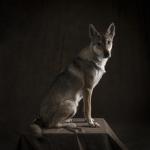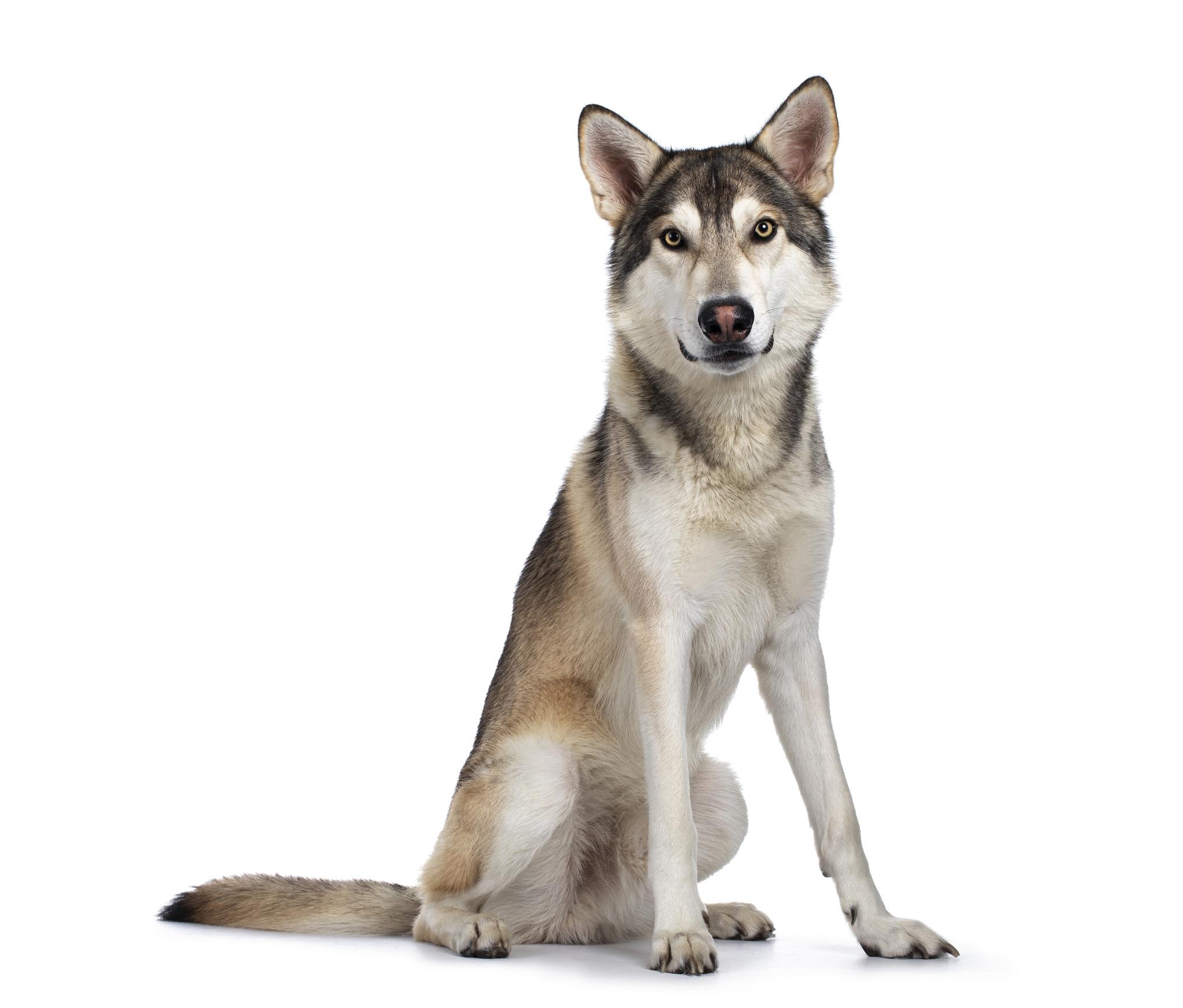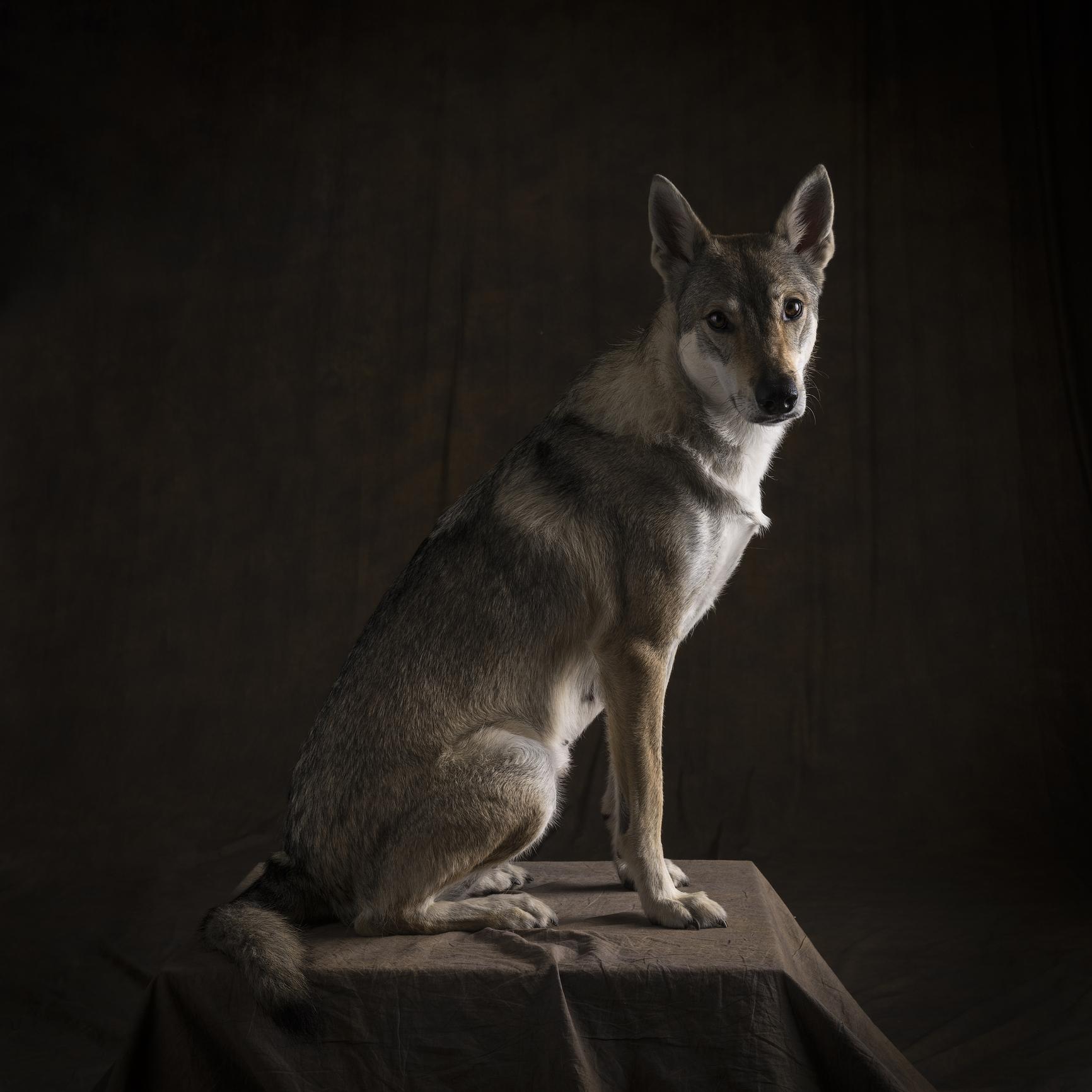Tamaskan

If you love dogs that look like wolves, then you will be fascinated by the Tamaskan breed. The Tamaskan dog is a great working dog and, as such, has an athletic appearance. Tamaskans are often confused with other dogs such as the Northern Inuit and the Czechoslovakian Wolfhound, but they are completely different breeds with a unique temperament that makes them great working dogs and wonderful companions.
In this AnimalWised, you will learn everything you need to know about the Tamaskan dog breed, from its care and health to its behavior and characteristics.
- Europe
- Finland
- 5-14
- 14-18
- 18-22
- 22-27
- 27-31
- More than 31
- 2-7
- 7-22
- 22-55
- 55-100
- 100-220
- 8-10
- 10-12
- 12-14
- 15-20
- Low
- Meidum
- High
Origin of the Tamaskan dog
Tamaskans are Finnish dogs crossed with Siberian Husky, Alaskan Malamute and German Shepherd in the 1980s. However, it is discussed that it is also genetically related to the Czech Wolfhound, Saarloos Wolfhound and Utonagan, which is why it is also called Finnish Wolfhound.
Tamaskans were meant to look like wolves, a trait that was highly valued in the early 1990s. The result was a very versatile dog, incredibly strong, hardy and agile. The Tamaskan is known to excel in the disciplines of agility and obedience, as well as sled racing.
In 2006, the first register of the breed was created, and its popularity began to rise, mainly due to the fact that many specimens played the role of wolves in series and movies. Currently, there are very few specimens of the Tamaskan, which are mainly found in the Nordic countries, the United States and Canada.
Check out this other article about 10 breeds that look like wolves if you want to learn more about other wolf-like breeds.
Physical characteristics of the Tamaskan dog
The Tamaskan is a tall, slender dog with an athletic build that undoubtedly resembles the wolf in appearance. Adult males can reach a height at the withers of Males 28 inches (71 cm) and weigh between 66 – 99 pounds (30 – 45 kg), while females are usually somewhat smaller.
The muscular body of the Tamaskan is slightly longer than it is tall, ending in a fairly long, fully furred tail that is typically carried in a low position unless the dog is alert or excited. The ears of the Tamaskan are triangular, of medium size and always erect. Its nose, which gives it an exceptional sense of smell, is black, and its expressive eyes are often shades of yellow, brown or amber, with black rims in most specimens.
Tamaskan Colors
The coat of the Tamaskan is double-layered, with the inner layer protecting it from both cold and heat. The outer layer, in turn, is soft, smooth and of medium length, although it is shortened in some places such as the face, ears, and part of the limbs. The predominant color of the coat is gray, which can be lighter or darker depending on the dog, and usually appears in combination with white and/or black areas.
Character of the Tamaskan dog
The Tamaskan, despite its appearance as a wild wolf, is a friendly, intelligent, and affectionate dog that forms close bonds with its family members. As long as it is properly socialized as a puppy, this breed tends to avoid conflict and is very sociable and playful with both people and other animals, even those that could be considered potential "prey" (cats, rabbits, etc.). Its noble character and proper training make the Tamaskan a wonderful therapy dog, both for working with children and with adults and the elderly. This pack dog prefers not to be left alone for long periods of time. It is better suited for the company of other people or dogs.
A notable characteristic of this dog is its intelligence, as well as its vitality and extreme motivation to perform the various tasks for which they are typically trained, such as sledding and other dog sports. When at home with their caretakers, they are calm dogs, somewhat less independent than other Nordic breeds and very expressive, which you will undoubtedly hear howling from time to time.
If you want to know more about how to properly socialize a dog to avoid behavior problems in the future, do not miss this other article on puppy and adult dog socialization.
Care of the Tamaskan dog
The Tamaskan, as long as it is healthy, does not require overly elaborate grooming. However, it is advisable to brush its dense coat at least once a week to remove dead hairs and keep the coat clean and shiny, especially during the molting season. As for the bath, it can be done occasionally, only when necessary and always with a special shampoo for dogs.
On the other hand, it is important to maintain good oral health to prevent the appearance of tartar and bad breath. From time to time, offer the dog natural snacks to chew or brush his teeth once or twice a week with a special toothpaste for dogs.
Being athletic and active, Tamasks enjoy long walks in nature or in the mountains. This helps them stay in good physical condition and allows them to file their nails themselves through contact with the ground, but in return exposes them to dangerous parasites such as fleas, ticks, and mosquitoes. For this reason, it is essential to protect the Tamaskan throughout the year with pipettes or collars, deworm them regularly and follow the vaccination schedule given by the veterinarian.
Additionally, special attention must be paid to the diet, which, whether based on forage, wet food, BARF or any other home prepared food, must provide the dog with all the nutrients and calories they need to stay healthy.
Training of the Tamaskan dog
It is important to start training the Tamaskan when it is still a puppy, paying special attention to its socialization during the sensitive phase (around three weeks to three months of age). If this dog is not properly socialized with other animals, objects and people, it can easily develop phobias or reactive behaviors to certain stimuli that are difficult to treat in adulthood.
On the other hand, the Tamaskan is a very intelligent and smart dog with a tremendous decision-making and problem-solving abilities, which means that they need a lot of mental stimulation in order not to get bored or frustrated. They are also a strong, agile and resilient breed, so physical stimulation is also indispensable. This makes the Tamaskan an ideal candidate for dog sports and activities, although they can sometimes be a bit stubborn when it comes to training.
It is also important to teach the dog from puppyhood to handle being alone well, as the Tamaskan is a very social breed that always wants to be accompanied and hate spending a lot of time alone. Unless you take the time to work on this aspect, it's possible that the dog will get frustrated or develop separation anxiety. This could lead to destructive behavior or excessive noises when they are alone at home.
Read this other article if you want to know more about separation anxiety in dogs, why it occurs, how to prevent it and how to treat it.
Health of the Tamaskan dog
In general, the Tamaskan is a very robust and healthy dog. Since it is the result of crossing other breeds of dogs, it does not have any significant congenital pathologies. Since there are very few registered specimens of this breed, we do not have conclusive studies on the likelihood of the Tamaskan exhibiting specific health problems. However, the most commonly observed health issues are the following:
- Hip dysplasia: This is a degenerative and hereditary joint issue caused by a malformation of the hip joint, resulting in pain and difficulty walking, running or jumping. It is particularly common in large and giant breed dogs and, if diagnosed early, can be treated.
- Degenerative Myelopathy: This neurodegenerative disease affects the spinal cord and causes weakness in the hind limbs, which can become completely paralyzed. This pathology was originally described in the German Shepherd, one of the breeds from which the Tamaskan is descended, but it can impact any dog. In the Tamaskan, myelopathy is extremely rare, so it is not a disease that should cause us too much concern.
- Cryptorchidism: This condition only occurs in male dogs because one or both testicles do not fully descend into the scrotum and remain in the inguinal canal. Although this is not a major problem when the animal is young, the undescended testicle can cause cancer over time. Therefore, it is recommended that dogs with this disorder be neutered.
Tamaskans, despite their size, can easily live to be 15 years old if they have regular veterinary checkups, receive adequate exercise, and eat a quality diet designed for them.
Where to adopt a Tamaskan dog?
The Tamaskan is currently a very little known breed, so it is difficult to find specimens for adoption. If you really think that this dog could be the ideal companion for you, you can contact various animal welfare organizations in case they know of a Tamaskan that needs to be adopted. More importantly, remember that breed is not the most important factor when adopting a dog. Choose based on the dog's compatibility with your lifestyle and schedule.
Tamaskan photos














